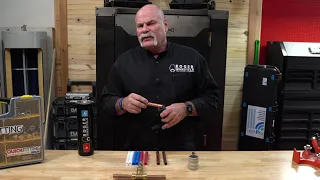Removing a bathtub might seem like a daunting task, but with the right tools and knowledge, it can be a manageable DIY project or a smooth process for professional plumbers. Whether you’re renovating your bathroom to install a sleek walk-in shower or simply replacing an old tub, understanding the proper steps and precautions is essential. In this guide, we’ll walk you through the entire process of removing a bathtub, highlighting key considerations and best practices to ensure a successful project.
Why Remove a Bathtub?
Upgrading Your Bathroom: Removing a bathtub allows you to modernize your bathroom with a more efficient and stylish shower setup, increasing both functionality and property value.
Repairing Damaged Plumbing: Sometimes, the existing bathtub may have underlying plumbing issues that require removal and replacement to prevent leaks and water damage.
Improving Accessibility: For homeowners seeking better accessibility, replacing a traditional bathtub with a walk-in shower can make daily routines easier and safer.
Tools and Materials You’ll Need
Before diving into the removal process, gather the necessary tools and materials to ensure a smooth operation:
- Safety Gear: Gloves, safety glasses, dust masks
- Sledgehammer or Hammer and Chisel: For breaking down the tub and removing tiles
- Reciprocating Saw: To cut through pipes and fixtures
- Utility Knife: For removing caulking and trim
- Pry Bar and Screwdrivers: To detach the tub from the wall and floor
- Buckets and Rags: For cleaning up debris and water
- Tape Measure and Level: To measure spaces and ensure accuracy during installation
Step-by-Step Process to Remove a Bathtub
1. Prepare the Area
Turn Off Water Supply: Before starting, ensure that the water supply to the bathroom is turned off to prevent any accidental leaks.
Protect the Surrounding Area: Lay down drop cloths or plastic sheeting to catch debris and protect your floors and fixtures from damage.
2. Remove Fixtures and Accessories
Detach Faucets and Showerheads: Use a wrench to disconnect the water supply lines from the faucets and showerheads. Carefully remove these fixtures to avoid damage.
Remove the Drain Assembly: Unscrew the drain cover and remove the drain assembly from the tub. This will allow you to detach the tub from the plumbing connections.
3. Cut Through Caulking and Trim
Use a Utility Knife: Carefully cut through any caulking or sealant around the edges of the bathtub to free it from the surrounding tiles and walls.
Remove Trim Pieces: Use a pry bar to gently remove any trim or molding around the tub area. Be cautious to avoid damaging the walls or tiles.
4. Disconnect Plumbing
Detach Water Lines: Using a reciprocating saw, carefully cut through the water supply lines connected to the bathtub. Ensure you have a bucket ready to catch any residual water.
Disconnect Drain Pipes: Cut through the drain pipes to fully detach the tub from the plumbing system.
5. Remove the Bathtub
Break Down the Tub: If dealing with a cast iron tub, it may be too heavy to remove in one piece. Use a sledgehammer or hammer and chisel to break the tub into manageable sections.
Lift Out the Sections: With assistance, lift the broken sections of the tub out of the bathroom. Take care to avoid injury from sharp edges and heavy pieces.
6. Clean Up the Area
Remove Debris: Clear away any remaining debris, broken tiles, and damaged drywall or plaster to prepare the space for the new installation.
Inspect for Damage: Check the walls and floor for any hidden damage caused by the old tub. Repair any issues before proceeding with the new installation.
Safety Tips When Removing a Bathtub
- Wear Protective Gear: Always wear gloves, safety glasses, and a dust mask to protect yourself from sharp edges and debris.
- Use Proper Tools: Ensure you have the right tools for each task to avoid accidents and make the removal process more efficient.
- Seek Assistance: Bathtub removal can be physically demanding. Having a helper can make the process safer and quicker.
- Watch for Hidden Pipes and Electricals: Be cautious of any hidden plumbing or electrical lines within the walls and floors to prevent accidental damage or hazards.
Common Mistakes to Avoid
- Rushing the Process: Taking your time ensures that each step is done correctly, reducing the risk of damage or injury.
- Not Turning Off the Water Supply: Always ensure the water is off to avoid unexpected leaks and water damage.
- Ignoring Structural Damage: If you notice any structural issues during removal, address them immediately to prevent further complications.
- Using the Wrong Tools: Using inappropriate tools can make the job harder and increase the risk of injury or damage to your bathroom.
Conclusion
Removing a bathtub is a significant undertaking that requires careful planning and execution. By following these steps and adhering to safety precautions, you can successfully remove your old tub and pave the way for a modern, efficient bathroom upgrade. Whether you’re a DIY enthusiast or a professional plumber, understanding the process ensures that the job is done right the first time, saving you time, money, and stress.
Ready to Upgrade Your Bathroom?
If you’re considering replacing your bathtub with a stylish walk-in shower, visit YourPlumbingPros.com for expert advice, high-quality fixtures, and professional installation services. Transform your bathroom into a luxurious, functional space today!




